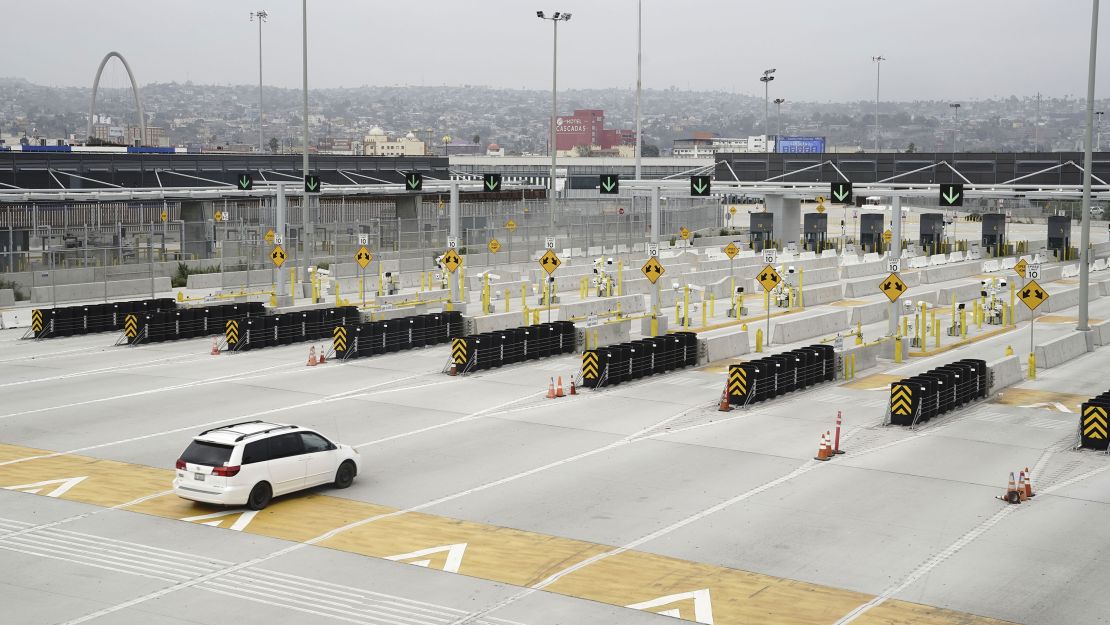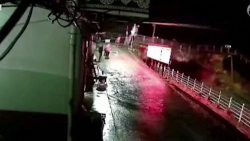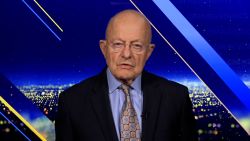“Want to hear the joke about insulin?” goes the bleak gag about America’s drug prices. “You have to go to Canada to get it.”
But even that’s not an option anymore.
Pandemic travel restrictions have made Americans prisoners of their country. Even within North America, Mexico and Canada have closed thousands of miles of border to all but essential travel, roiling plans for vacation, work, and school. For cash-strapped Americans, it has also cut off access to medicines and health care services that they can’t afford at home – at a time when money is tighter than ever.
Stephanie Boland’s nine-year-old son was diagnosed with diabetes in December. Traveling to Canada to fill his insulin prescription took a half-day’s drive from where they live in Brainerd, Minnesota, but it was worth it – the purchase was a simple, over-the-counter affair. One pack of injection pens, which would last several months, cost less than a hundred dollars, she says, compared to a list price of $530 at home.
As their son’s disease began to rewrite the routines of daily life, the Bolands planned to cross into Canada again to restock. Then the pandemic hit.
Boland, a masseuse, was forced to stop working. Her husband, a self-employed financial adviser, found his income hit by pandemic-related turbulence in the markets, too. Then their source for affordable insulin vanished behind a border that had never been closed before in the history of US-Canada relations.
“We were going to make a trip north, one more trip in March, but then they closed the border,” she said.
Buying insulin abroad
Only 1.5% of American adults who take prescription medications buy their drugs abroad, according to a June analysis by researchers at the University of Florida Gainesville, based on a 2015-2017 National Health Interview Survey.
But that’s still an estimated 2.3 million people.
Many medicines and medical services are cheaper in neighboring Canada and Mexico, thanks to price controls and the power of the US dollar. The difference is great enough that US insurer PEHP, which covers Utah’s state employees, offers partially paid trips to Vancouver and Tijuana “to help you save money on your prescriptions.” In popular Mexican resort towns like Cabo San Lucas on the West Coast, or Tulum on the East Coast, pharmacies, doctors and dentists targeting US clientele dot the main drag, their prices on bright display. And the difference between those prices and the costs of the same drugs at US pharmacies can mean life or death.
No drug is a better-known example of that calculus than insulin, a vital hormone in the body’s metabolism. Seven million American diabetics don’t produce it naturally – or not enough of it – and need to inject it throughout the day. Without it, dangerous levels of glucose build up in the blood, damaging organs and producing a painful stupor. In a worst case scenario, lack of insulin can kill within three days.
Americans have been going to Canada for insulin since scientists learned how to produce it in labs at the University of Toronto in 1921. One of the first patients to try it was an American: Elizabeth Hughes, the teenage daughter of then-US Secretary of State Charles Evans Hughes.
“I’m so happy and elated,” she wrote in a letter to her mother from Canada, describing her first self-injection and the “enormous” meal she enjoyed afterward. Before crossing the border, the 15-year-old had managed her condition by starving herself – the only life-prolonging trick available to diabetics before insulin. Five feet tall, she weighed only 45 pounds.
A hundred years later, and after national soul-searching over the soaring cost of insulin, some Americans are still starving themselves. Daniel Carlisle, a Type 1 diabetic in Texas, has sometimes tried not to eat for days at a time, in an attempt to ration insulin. When he was 18 and short on cash, he even contemplated robbing a pharmacy, he says.
“I always do the math about how many days’ supply of insulin I have in the refrigerator,” the 60-year-old Texan says.
“That’s how I know my lifespan at that point. My lifespan is measured in exactly how many days’ worth of insulin I have in hand – plus three days.”
Nuevo Progreso
For the past three years, buying insulin in Mexico has brought Carlisle security.
His trips started with a split tooth in 2017. “I went to a dentist near where I live, and he said he could repair it for like $10,000,” says Carlisle, who is uninsured. “So I told him, ‘Look I can’t afford to send my kids to Harvard. Sure can’t afford to send yours.”
He tried to ignore his aching tooth, but at the urging of his family, eventually drove a few hundred miles south from his home in Houston to the busy Mexican town of Nuevo Progreso.
“As soon as you come across the bridges, hawkers are saying “Need a dentist? Need a pharmacy? It’s just constant,” he says. First he got his tooth fixed – a root canal, bridge and crown altogether would end up costing him just $750. “The dentists aren’t marble palaces, but they’re clean,” he says.
Then he dipped into a pharmacy to ask the price of a vial of Humalog insulin, one of two kinds he takes. The answer: US $70. He checked the expiration date on the box, and then offered $20.
“You’ve got to negotiate!” he says. “I just tell them I’ll die without it and then they’ll lose a customer. They don’t put up a fuss.”
A vial of the same insulin in the US has a list price of $274.70.
Since then, that’s the only place where he buys insulin, Carlisle says, and he’s never had a problem with its quality. But with the borders closed, he doesn’t expect be back any time soon.

A vast gray area
Pharmacy staff in several drugstores in border towns in both Canada and Mexico tell CNN that they’ve seen significant drops in foot traffic since their countries’ borders with the US closed. Though American scofflaws have been accused of crossing into Mexico for nonessential errands, overall border crossings have plummeted.
One young man working at a pharmacy near Tijuana told CNN that business had fallen about 40% since the border closed. He asked to remain anonymous because he was not authorized to speak about the business.
Technically, bringing prescription drugs into the US is illegal. But the US Food and Drug Administration (FDA) has created a gray area for small amounts: Importation “might” be allowed, according to the agency’s website, if the medicine doesn’t exceed a three month supply.
Staff at Mark’s Marine Pharmacy in Vancouver, Canada, less than an hour’s drive from the US border, typically fill hundreds of orders for US customers each day, general manager Jordan Rosenblatt says, and rarely have any problem shipping it. With the borders closed, online ordering has spiked, he adds.
Reviews over the years on their Facebook page compare prices of all kinds of prescription drugs to those in the US, with commenters from as far as New Jersey and Texas. “They sell and send me my asthma inhalers at a price that is non-predatory, unlike here in the U.S. Happiest gal today! Thank you!” reads one.
But ordering online isn’t for everyone – there is always a risk that the medicine will be confiscated or that temperature-sensitive drugs like insulin could go bad waiting at customs or in US Postal Service delays.
And as the frustrations of border closures highlight, foreign health systems make a poor fallback no matter how you access them.
“For any given individual in the short run, going to Canada is a decent solution, but it’s not a systemic solution,” says Dr. Vikas Saini, a Harvard-trained cardiologist and president of the Lown Institute, a nonpartisan health care think tank.
US President Donald Trump has called to allow larger scale importation from Canada, among a raft of recent proposals to reduce the prices of certain US drugs. But that’s unlikely to make a dent in the US market, Saini says: “Canada is a country of about 30 million people. It doesn’t have enough medication to provide all those prescriptions for the US – a nation 10 times the size.”
Some Canadian health industry groups and patients agree. Since 2019, they’ve warned that Trump’s importation plan could lead to drug shortages for Canadians – a fear likely sharpened after witnessing global shortages of vital medical equipment in the early months of the Covid-19 pandemic.
A crumbling economy
As the pandemic wears on, the options are dwindling for Americans who can’t afford to be sick in the United States – especially after the cratering economy erased nearly 13 million jobs, taking health insurance options with them.
Even at Canadian prices, some are struggling to pay for their prescriptions. “Recently, we’re hearing about all the financial issues of people laid off,” says Rosenblatt, the Vancouver pharmacy manager. “We have American customers that have been working with us for years, and under these circumstances, we’ve sent what they needed and we tell them, ‘Pay us when you can.’”
To make insulin more accessible, some US states have pushed for price caps on copays. The three companies which control the US insulin market offer discount plans, including new programs to which Americans who were financially impacted by the pandemic can apply for temporary access to cheaper or free insulin. And Walmart offers cheap insulin over the counter (though this is an older formulation that can make blood sugar management more complicated than newer, prescription versions.)
Yet many are still struggling – and not just the nearly 28 million Americans who don’t have health insurance, a number estimated by the Kaiser Family Foundation. Even Americans with health insurance, who benefit from negotiated prices that are lower than the list prices, sometimes still can’t afford all the costs of living with diabetes.
In Dayton, Ohio, Mindi Patterson’s family gets health insurance through her job as a Costco clerk. But even then, keeping up with the cost of insulin for both of her teenage sons and her husband is still a tightrope walk. “We have had to dig through the trash for (discarded) reservoirs from insulin pumps, when we haven’t had the money to buy the next bit of supplies,” she says.
“Right now I have a refill for (my son’s) insulin waiting, but I really don’t have the funds just yet to pick it up. So they’re holding onto it for me until payday,” she said.
Sabrina Renaud, a 22-year-old dietary aide in South Carolina, works fulltime at a hospital that offers health insurance to employees – but she earns about $1,300 per month after taxes, and says she simply can’t afford the deductible, premiums, and copays of the company plan and still make rent. “So I thought, I’m just going to have to wiggle through this without health insurance,” she says.
Renaud hasn’t seen a doctor to renew her insulin prescription in more than a year. Instead, every couple of months, she messages a woman she’s never met in real life, with a list of what she needs. So far, the life-saving supplies she needs keep turning up in the mail.
The woman, who asked to remain anonymous because redistributing prescription drugs is illegal, tells CNN that she has shipped insulin to hundreds of people over the years – an effort that she describes as a “necessary evil.” People from the US and abroad send spare vials and injection pens to her, and she says she sends them for free to any American who asks for it.
“I personally do this, gosh, an average of four times per week,” she says.
“I could put out a tweet right now that someone needs (insulin brand) Humalog, and I’ll probably get 100 responses saying “I have extra,” from all over the country,” she says. “Folks are willing to pay $50 to overnight it to someone who’s in a really bad situation.”
She has even received large insulin donations from Canada.
An increasingly busy “black market”
More than a dozen diabetic Americans interviewed for this article said they had participated in such an informal insulin exchange powered by social media, widely referred to as the “black market.” Organizers are nodes in the network, using their prominence on platforms like Twitter to connect people who have insulin to those who don’t.
“The FDA does not recommend sharing or reselling diabetic supplies, including insulin, due to concerns about the safety and efficacy of such resold or shared products,” an agency spokesman told CNN. But defenders of the network say they can’t stop, pointing to several deaths of diabetic Americans who rationed their insulin.
“We have been left with no other choice,” says emerging Minnesota politician Quinn Nystrom, whose campaign for Congress emphasizes affordable health care. A Type 1 diabetic herself, Nystrom helps distribute insulin donations and – before the pandemic – organized “caravans” to Canada to purchase insulin.
“Am I willing to break the law to keep American citizens alive? Yes,” she says.
Demand for black market insulin has spiked since the pandemic began, said another organizer in Colorado, who asked to remain anonymous due to the illegality of the work. In the last week of July alone, she facilitated $24,000 worth of insulin donations, she estimates.
“Prior to this whole Covid-19 crisis – let’s say just six months ago or eight months ago, I might hear about someone who needed insulin maybe once a month,” she says. “Fast-forward to now, when people are losing jobs: In the last seven days, I have heard from 15 different people who are almost out of insulin and have no way to afford their next purchase.”
Daniel Carlisle, the Houstonian, has sometimes donated some of his own supply to fellow diabetics in Houston and Dallas. “If someone died because they were lacking and I said I won’t share with you, well, I’ve got a real moral issue with that,” he says. “If you were living in Houston and needed some insulin, I would drive over and give you a vial.”
But he does have cash flow limits, he adds. And if he can’t restock in Nuevo Progreso soon, he’ll have to ask for help on the same black market he once gave to.
“Right now I’m looking at February. If I can’t make it to Mexico by then – and have the money to make the trip – I’ll be in trouble,” he says.
Reporting contributed by CNN’s Natalie Gallón in Mexico City.



















